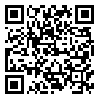Sat, Apr 5, 2025
[Archive]
Volume 8, Issue 2 (6-2018)
ASE 2018, 8(2): 2672-2678 |
Back to browse issues page
Download citation:
BibTeX | RIS | EndNote | Medlars | ProCite | Reference Manager | RefWorks
Send citation to:



BibTeX | RIS | EndNote | Medlars | ProCite | Reference Manager | RefWorks
Send citation to:
Rahman A, Amysar M. DEVELOPMENT OF A DC MOTOR ASSISTED HYDRAULIC BRAKING SYSTEM FOR AUTOMOTIVE USE. ASE 2018; 8 (2) :2672-2678
URL: http://www.iust.ac.ir/ijae/article-1-459-en.html
URL: http://www.iust.ac.ir/ijae/article-1-459-en.html
Professor, Department of Mechanical Engineering, International Islamic University Malaysia, 50728 KL, Malaysia
Abstract: (24065 Views)
ABSTRACT: Deceleration or stopping the vehicle without any diving and lateral acceleration is essential to develop an effective braking system. The hydraulic braking system with intelligent braking called Antilock Braking system (ABS) and Electronic Stability Control (ESC) has been introduced. However, due to the insufficient human effort, the ABS and ESC to some extent, not function well. This has been emphasised to develop a DC motor assist hydraulic braking system by associating the wheel speed and engine fuel flow sensor to stop the vehicle in required braking distance without any diving and lateral movement. This study investigates theoretically by Solid work simulation model and experimentally by product development. The simulation model has shown that a full load passenger car needs 15.7Mpa of braking pressure to stop 50km/h vehicle in 10m. The experimental results of the model show that the pressure develops when the pedal fully applied without and with aids of the DC motor is 910 kPa and 1130 kPa respectively, which contribute to 23.3% of pressure increase.
KEYWORDS: DC motor assist hydraulic braking system; Digital Control System; Braking efficiency.
KEYWORDS: DC motor assist hydraulic braking system; Digital Control System; Braking efficiency.
Type of Study: Research |
Subject:
Manufacturing
Send email to the article author
| Rights and permissions | |
 | This work is licensed under a Creative Commons Attribution-NonCommercial 4.0 International License. |






